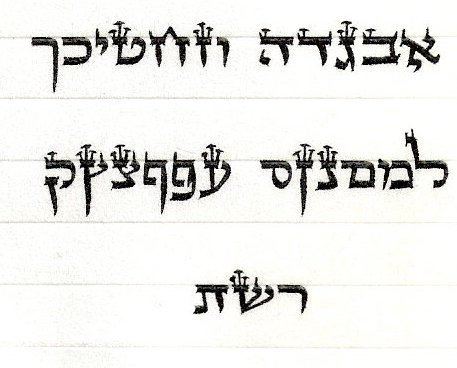 | ||
Ashuri script (Hebrew: כְּתָב אַשּׁוּרִי, k'tav ashurí), translated either as "Assyrian alphabet" or "beautiful alphabet," is a traditional calligraphic form of the alphabet shared between Hebrew, Aramaic and Phoenician. Over some centuries, certain ornaments were simplified or removed for use outside of traditional religious calligraphy, to become the modern print form of the Hebrew alphabet, which it most closely resembles.
Mention of the Ashuri script first appears in rabbinic writings of the Mishnaic and Talmudic periods, referring to the formal script used in certain Jewish ceremonial items, such as the Sefer Torah, Tefillin, and Mezuzah. Also sometimes called the "square" script, the term is used to distinguish the Ashuri script from the Ivri script, also known as Paleo-Hebrew.
Ritual use
There are many rules concerning the proper formation of letters if the written text is to be valid for religious purposes.
The Ashkenazi, Sephardi, Chabad (Lubavitch), Mizrahi and Yemenite Jews each have their own calligraphic tradition regarding certain details of how each letter is formed, although the overall shape is similar. Generally, while each tradition favors their own calligraphic style, none consider the other traditions passul (invalid) for Torah scrolls or any other ritually used scroll or parchment.
Samaritans are the only group today known to maintain a calligraphic tradition different from Ashuri script, using instead Ivri script.
